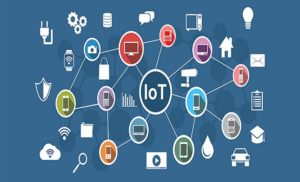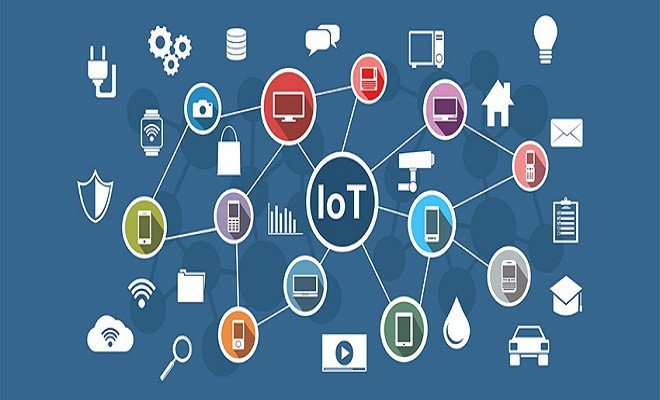It is important to provide data security and reliable connectivity to derive the real value of IoT, according to industry experts.

IoT can be broadly discussed from two different aspects: one is the technology part and the other is its use cases.
If we talk about the technology aspect, it is quite interesting to see how IoT is connecting millions of devices together and enabling them to talk to each other. Another interesting side of the story is the different types of IoT uses cases that are changing things today.
Highlighting the significant use cases of IoT, Karthikeyan Natarajan – Global Head, Engineering, IOT & Enterprise Mobility, Tech Mahindra – says, “Incorporating of sensors in various products have been there for the past few years and that is something not new. However, in the last 20 years, connectivity between devices along with collecting and analysing data, has significantly improved. And all of this has been possible, thanks to the availability of 4G LTE or narrowband.”
According to him, the challenge for many enterprises today is to find a business case where then can invest for long term and sustain.
Improving asset utilisation, optimisation and expansion of services that can be delivered to the customers, predictive maintenance – these are the proven use cases which enterprises believe will help them improve efficiency and reduce cost.
However, he opines that the real opportunity for IoT will lie in revenue based growth by way of adding/removing certain product features to reduce costs and provide a unique customer experience. In order to achieve all this, it is important to provide data security and reliable connectivity for the collection and dissipation of information using IoT based technologies.
Industry use cases
Gokul P Deshpande, CEO, C/mos processor, presents two interesting use cases of IoT in the manufacturing industry.
A water chiller manufacturing company that has installed its chillers all over the world is making use of IoT to monitor these installations from the last four years. The huge data collected during these years has enabled them to improve efficiency, remotely diagnose the installations as well as provide greater customer experience.
The second use case is of a welding equipment manufacturer that provides a vast amount of weld data related to electricity consumption and the amount of wire required to its consumers.
“The most important use cases would belong to the small and medium enterprises sector where efficiency matters a lot. Small and medium enterprises form almost 70 percent of out manufacturing sector. So, improving their efficiency and bringing the IoT platform to their costing level would lead to more adoption of IoT in India,”Deshpande notes.
He adds that despite advances in price fall, miniaturisation of memory as well as increased bandwidth availability, there is still a long way to go for the continuing rise of IoT in India.
New use cases bring new business models
There are different use cases across different verticals, enabling better processes and functions, but we are yet to derive the real value of the technology.
“Earlier, most of the focus was on endpoint monitoring and improving the efficiency of connected devices. But as the industry progresses, new use cases are coming up that are helping in creating new business models and solutions to customers,” says Benoy CS, Director-Digital Transformation (ICT Practice), Frost and Sullivan.
“In the future when these industries become little more mature, these use cases will diversify. And that is when the real value of IoT can be derived,” he adds.
Five major categories where IoT use cases are really scaling:
- Connected assets (where assets are being developed to be smarter and connected)
- Connected logistics (which is all about speed monitoring and supply chain intelligence)
- Connected workers (leading to efficiency and safety of workers),
- Smart manufacturing (Industry 4.0) and
- Consumer goods (everything from cars to toothpaste are becoming smart today with the help of IoT)
“In addition to better customer experience and operational efficiency, IoT is enabling business model transformation,” asserts Prankur Sharma, Senior Consultant, Zinnov.
“The challenge for many enterprises today is to find a business case where then can invest for long term and sustain.”
Data challenges & strategies to address it
Natarajan presents the following points to elaborate on the above topic.
4Ds of IoT implementation:
- Data collection – Using sensors or assets to gather information.
- Data storage – Relates to the storage of data at the edge or at the cloud.
- Data analytics – Contextual way of solving data problems, a lot of which can be performed on the edge.
- Data monetisation – Regarding how the above three can be used to positively impact a business.
3Vs of IoT implementation:
- The volume of data – Arranging enough space for data storage; the more, the better.
- The velocity of data – Relates to the frequency with which one needs to collect data (per hour, per day, per week, etc.)
- Value of data – Utilising the data efficiently to produce worthwhile customer experience that greatly impacts the customer services.
In summary, one needs to decide the velocity, then look at the volume and then go back and look at the value of the business case that is being worked upon.
Agreeing with Natarajan’s opinion, Benoy adds his perspective on companies that are working with IoT. He says that one needs to keep in mind to make a clear decision on whether to work in an open network or a closed network. As data nowadays is available to everyone, the security element becomes critical when one is dealing with private data. This is important as it concerns the ownership of data.
Above all, Avnesh Dasari – Firmware Engineer at Efftronics – states that a generated data is of no value to the customer unless an actionable insight can be provided. So this will call for more focused analytics that can be generated using this data. Also, this analytics should be more of a prescriptive kind than a descriptive.
Managing the challenge of an integrated business model on an IoT scale
According to Natarajan, there is an interesting opportunity to change the way in which one maintains contacts with its customers with the help of IoT. This change can be initiated by ensuring 99.9 percent availability of asset and charging based on that, rather than charging based upon a certain percentage of CapEx. So the business models have to be looked from the perspective of maintenance, or for assets as a service.
Building on what was previously stated, Prankur Sharma says that business model transformation can really be enabled by some of the data that has been collected through IoT solution. This could be done by making the existing products smarter and creating new ways for monetisation.
“IoT security has not been addressed yet fully. And that’s the reason why customers are still hesitant to work with this technology.”
Meanwhile, Avnesh Dasari opines that for the new business model in IoT to get established, both CapEx and OpEx have to play a role.
Pointing out that many of the IoT companies in India are not actually making money, Benoy says that defining a business model could be a critical element in terms of how successful or not one can be.
Certain things to have clarity on to establish a successful business model include:-
- Identifying the right customer.
- The value proposition to be given to that particular customer.
- Building together the entire value proposition.
- The economic value which can be derived and given to the customer
Current scenario of IoT security
Natarajan says, “IoT security has not been addressed yet fully. And that’s the reason why customers are still hesitant to work with this technology. So, convincing them to change their minds is going to be a difficult task. But when they will see that benefits outweigh the risks in terms of security, then it will be much easier for them.”
Security won’t come at an instant, but one will have to patiently wait and work towards it, he adds.
The experts, however, agree that security is a concern as well as a key pillar that should be kept in mind when implementing IoT use cases and applications.
Prankur Sharma points out to two aspects of IoT security:-
- Data security and privacy – Stakeholders of heavily regulated industries such as healthcare and insurance are not very open to sharing data due to a lack of awareness and perception on what data is really usable and what is not.
- Security from a technological aspect – There are many cases where smart devices were hacked and such threats are hampering adoption of IoT.
He believes awareness and change management is one step that can be taken to make people open about data sharing to enable a lot of applications that are possible today.
Before implementing IoT, it is important to make sure that the networks inside a factory are safe because it will expose every machine to the internet, points out Gokul P Deshpande.
Today, the hacker world is getting into anything and everything. Their intention is sometimes not getting money but satisfaction. So, network security is of prime importance.
“What is secure today might not be secure after 24 hours. The game of thief and police will continue. Makers will have to keep upgrading their security and the hackers will inevitably keep pushing them on their toes to keep the security intact,” he explains.
However, he assures that network safety is being taken care of by most of the gateway manufacturers today.
“When you trying to create an IoT application or solution, security should be there right from the beginning in the design stage itself and should not be an afterthought” – Benoy CS.
Current status of the data protocols and their future
Data protocols are evolving but a common standard is not likely in the next few years, according to Natarajan, who says there will be at least four or five competing standards.
One can expect the data protocols to be upgraded in the future to accommodate the existing IoT systems/standards. This is much like the telecom operators maintaining 3G and 4G technologies, when 5G sets foot.
Currently, there are some protocols like CoAP, MQTT and SNMP, which a lot of IoT platforms are now supporting.
Scope of 5G as a standard in India
5G is not likely to happen in India for the next three to five years, because the spectrum itself is not auctioned yet. However, when it happens, Natarajan opines, it is going to be more around the enterprise digital transformation more than the consumer side of the story.
5G is expected to create completely new set of businesses. For example the existing enterprises will see an upgrade to their factory warehouses and how they really want to support on the field services in a completely different way than what is being done now. But a lot of them will happen in the western world before it starts getting into India, because many of the Indian telecom operators are already in huge debt, he adds.









